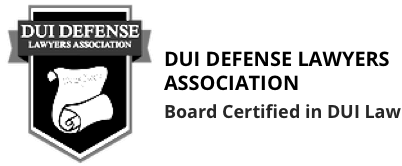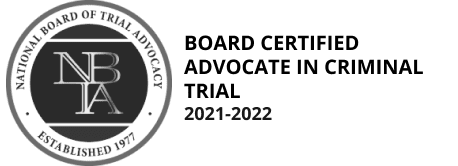The Texan’s Guide to DWI Laws and Understanding Your Rights
Texas is currently the number one DWI fatality state in the United States. Accordingly, the Federal Government gave the State of Texas extra money to be spent solely on hunting DWIs called the DWI STEP Program. Every day, innocent people are convicted of a DWI they did not commit. Only the skilled trial lawyer will be able to negotiate your case around and through the government. It’s a DWI witch hunt out there and you need to know your rights.
If you plan to consume alcohol and then operate a vehicle, you better be prepared to make smart decisions to protect your future and your freedom. The following are some of the most frequently asked questions. However, if you have any other questions, please don’t hesitate to contact our offices and we would be happy to answer all your questions.
What is the definition of “intoxicated”?
What is the definition of “normal”?
What is the definition of 0.08 alcohol concentration?
At what point in time are they considering whether I am a 0.08?
If I blow a 0.000 will they let me go home?
How accurate are breath, blood or urine tests?
What is the science behind breath testing versus blood testing?
What is a portable breath test device and will that affect my license?
Are crimes of DWI and public intoxication different, and if so, how?
What are the penalties for DWI?
What’s a “deadly weapon” in a DWI?
What is the significance of a “deadly weapon” finding?
Any special conditions placed upon bond for DWI?
Is a person required to take a breath, blood or urine test when requested by a police officer?
What happens if I refuse a breath or blood test when the officer asks?
What should I do during “No Refusal” weekends?
What are the Standard Field Sobriety Test (SFSTs)?
1. What is DWI?
The Texas Penal Code § 49.04 defines DWI as operating a motor vehicle in a public place while intoxicated. Note, the law does not say drunk driving, but intoxicated.
2. What is the definition of “intoxicated”?
The Texas Supreme Court has defied intoxicated in three ways: 1). Not having the normal use of one’s mental faculties; 2). Not having the normal use of one’s physical faculties, or 3). Having a breath or blood alcohol concentration of 0.08 or more. A person may be intoxicated on alcohol, drugs, dangerous drugs, prescription medication, over the counter medication, controlled substances or any combination thereof. It’s not a defense that you are on drugs and not alcohol. You can even get a DWI for taking your prescribed medication or over the counter medications!
3. What is the definition of “normal”?
Actually, case law specifically prohibits the court from defining normal. That being said, the district attorney is allowed to argue that normal refers to an average person’s abilities. However, the skilled trial lawyer will be able to show that just because you are not necessarily average, whatever that is, that you are still normal and were acting within your normal mental and physical faculties. Things to keep in mind: level of education, learning disabilities, mental illnesses, physical injuries or handicaps, and just general clumsiness, nervousness or inexperience with the tests. Additionally, fevers, dental work, GERD or acid reflux disease, liver or kidney damage, and blood issues may all affect a blood or breath alcohol concentration level.
4. What is the definition of 0.08 alcohol concentration?
“Alcohol concentration” is defined by statute as:
a) the number of grams of alcohol per 100 milliliters of blood;
b) the number of grams of alcohol per 210 liters of breath; or
c) the number of grams of alcohol per 67 milliliters of urine.
Ultimately it is very difficult to judge or measure your actual blood alcohol concentration (BAC) level. Factors that may affect your BAC level include, most importantly, the amount of food you consumed, when you consumed that food, what the food was, the number of drinks, over what time period, at what rate, your sex, age, weight, body fat composition, temperature, history of drinking behavior and whether you have any medical issues with your blood or organs. At best the breath and blood tests, even if done perfectly, are just an approximation of your BAC with a usual acceptable range of error of 20%. And the results of portable breath testers at the side of the road or sold in some stores are not even allowed in court because of how unreliable they are.
5. At what point in time are they considering whether I am a 0.08?
The State must prove that you were at least a 0.08 at the time of driving. And they must prove that this result is accurate and reliable. It is not illegal to be a 0.08 before or after the time of driving. Depending on your individual factors discussed above, your BAC may continue to rise up to two hours and 18 minutes after your last drink.
This creates quite the problem for the state and they try to get their “experts” to use a science called Retrograde Extrapolation to tell us what your BAC was at the time of driving based on a later breath or blood score. The problem is that their “experts” don’t follow the Widmark equation and just do an approximation. It’s truly junk science. And only the learned and skilled trial attorney will be able to turn their numbers against them and show the unreliability of the score.
If you have a breath or blood test, it is imperative that you contact a DWI trial attorney such as Mark Thiessen. Only about 5% of the attorneys out there can try a breath and 1% can try a blood test case and win. Mr. Thiessen is trial tested and proven.
6. If I blow a 0.000 will they let me go home?
NO! The police do not have the authority to release you once you are arrested for DWI. They must call the district attorney’s office and only the DA can release you. However, note that blowing a 0.000 is the first stage in a drug recognition evaluation (DRE). Congratulations, you blew a 0.000, now you get to do 100 more steps to prove that you’re not on drugs. And the police officer testing you for drugs was trained by other police offices and doesn’t even have a college degree in science, let alone a medical degree. You’re not getting out of jail once you are in there. There is no benefit to taking a breath test.
7. How accurate are the breath, blood or urine tests?
It depends. Urine is the least accurate or reliable as your bladder is the trash can of the body. Things that are in your urine are waste and obviously not in your system any more. Breath is somewhat accurate if a scientist knows ALL of your personal factors. Any one factor can affect the breath test. The state will concede that the breath test has a 20% acceptable range of error. Would you trust a thermometer that was supposed to read 98.6 and it was deemed accurate and reliable if it came with 78-118? You sure wouldn’t! And that’s why many states are junking their Intoxilyzer 5000EN and going to blood testing. Blood is accurate if the right anti-coagulants are added, if the blood is stored properly, if the blood cells are not traumatized, if the alcohol does not ferment in the tube, if it is in a pipette with the known n-propanol at the required ratio… and I haven’t even gotten into the gas chromatograph. Needless to say, blood testing also has tremendous problems. All of this testing has tremendous problems and we cannot trust our freedom to such science. ALWAYS refuse any breath, blood or urine tests. And call a skilled DWI attorney.
8. What is the science behind breath testing versus blood testing?
Texas uses a machine named the Intoxilyzer 5000EN. It works on the basis of infrared spectroscopy. Basically, light emits out of a source in one end and the amount of light is registered at the other end in a receptor. Obviously with nothing in there, all the light comes through. However, when you blow alcohol molecules, they absorb some of the light so not as much light gets through. The machine then calculates the difference. The machine then measures this difference against a known 0.08 alcohol concentration out of a simulator solution. So, if your breath is all measured in reference to this known concentration, shouldn’t we get to see how it is made, and where, and by whom? It’s a very ripe area for cross examination. So is, the source code, the filter wheel, the age of the components (it runs on a Z-80 chip, same one as in the Atari), and much much more. Many states have abandoned their Intoxilyzer 5000ENs and gone with newer 8000 models or other models all together. Not Texas yet. But thanks Texas, it helps my clients tremendously.
Blood testing is based on a standard called gas chromatography. This is a more reliable method of analyzation; however it also has its problems. It’s based on charging molecules and spinning through different coils and based on the composition of the coils, which molecules come out at what rate and burn off to what degree. The skilled and learned DWI attorney will need all of the records not only from the blood draw and chain of custody, but from the actual GC machine as well. This is where your attorney needs to be more knowledgeable than the expert. Only less than 1% (also, let’s make sure this is all justified formatting or whatever looks best on the page.) of the attorneys out there have ever tried a blood test case or should try a blood test case. If your attorney can’t explain gas chromatography to you, how is he going to explain it to the jury and explain to them the problems in simple terms? Call Mark Thiessen at 713-864-9000.
9. What is a portable breath testing device and will it affect my license?
A portable breath testing device (PBT) is a little gizmo officers can use at the side of the road to estimate your intoxication and aid in their decision. The PBT is junk science and the result is never admissible in a trial. It can be used to show that you consumed alcohol, but the result is so unreliable that the courts have prohibited the result because it can confuse the jury. So, no, refusing or taking a PBT will have no consequence on your license. It’s only the big 80s-looking machine at the station that they think is reliable and try to use to affect your license.
10. How does DWI differ from Public Intoxication?
Imagine being sober at 0.000. Pilots aren’t even allowed to drink 24 hours before they fly. Commercial truck drivers can’t drive over a 0.02. DWI is at a 0.08. And then way further down is Public Intoxication (PI). The law defines PI as being a danger to yourself or others. Really? A danger? You have to be pretty drunk to be a danger. However, if the driver gets a DWI and the passenger is intoxicated, the police cannot let the passenger drive and they can’t leave an intoxicated person on the side of a busy road, so many passengers get arrested for PI if no one can pick them up or they can’t call a cab before the car is towed. Never plead guilty to PI just to get out of jail. You will get out at the same time if you plead not guilty. A PI can come back to haunt you in many ways.
11. What are the penalties for DWI?
The penalties for DWI are as follows:
- First offense:
A fine not to exceed $2,000 and/or the possibility of serving jail time from three days to 180 days, and a driver’s license suspension of 90 to 365 days. (Class B Misdemeanor) - Second offense:
Fine increases to no more than $4,000 and/or jail from 30 days to one year, and a possible driver’s license suspension ranging from 180 days to two years. (Class A Misdemeanor) - Third offense:
A fine up to $10,000 and/or two to 10 years of imprisonment, and suspension of your driver’s license ranging from 180 days up to two years. (3rd Degree Felony) - DWI with an open alcohol container (first offense):
In addition to the penalty referenced above, you face a minimum six days in jail and a fine of no more than $2,000. (Class B Misdemeanor) - DWI with an accident where serious bodily injury occurred as a proximate cause of the intoxication: Intoxication Assault.
If convicted you may serve a minimum of two years and a maximum of 10 years in jail. Additionally, you may be fined up to $10,000. (3rd Degree Felony) - DWI where a death has occurred as a proximate cause of the intoxication: Intoxication Manslaughter.
If convicted you might have to pay a maximum fine of $10,000 and/or be imprisoned from two to 20 years (Intoxicated Manslaughter or Manslaughter with use of Deadly Weapon are both 2nd degree felonies). Note, the district attorney can stack charges against you for each death, i.e. two deaths is four to 40 years, etc. - A prior DWI conviction and a present drag racing charge:
Drag racing is a class B misdemeanor, however, it becomes a class A misdemeanor where the person had a prior drag racing conviction, a DWI conviction or had an open alcohol container while they were driving. - DWI with a child passenger (under the age of 15): state jail felony.
Punishment for a non-enhanced state jail felony is by confinement in a state jail for any term of not more than two years or less than 180 days and a fine not to exceed $10,000.
In the misdemeanor classifications you may be eligible for probation, but there is no guarantee that you will receive a probated jail sentence or fine. If convicted of intoxication assault and granted probation, a minimum of 30 days in jail is mandatory as a condition of probation. In order to receive probation of intoxication manslaughter it requires a minimum of 120 days in jail as a condition of your probation. However, if you are convicted of Intoxication Assault or Intoxication Manslaughter and the court or jury finds that you committed the offense with a deadly weapon you may be ineligible to receive probation at all.
12. What’s a “deadly weapon” in a DWI?
A motor vehicle can be a “deadly weapon” where an alcohol related accident results in a death or where a death could have occurred by the manner of driving. The Texas Court of Criminal Appeals has held that intoxicated drivers who are involved in accidents where a death has occurred, can be found to have used a “deadly weapon.” Moreover, the Texas Court of Criminal Appeals has held that in a non-death felony DWI case, depending upon how the vehicle was driven, a “deadly weapon” finding may be proper.
13. What is the significance of a “deadly weapon” finding?
Under Texas law, a “deadly weapon” finding prevents a person who has been sentenced to prison from accumulating any good time credit toward an early release until they have actually served one-half of their sentence.
14. Any special conditions placed upon bond for DWI?
Short answer: if it’s a first offense, it’s up to the individual judge and every court is different. However, if you are charged with a subsequent offense of DWI or Intoxicated Assault or Manslaughter, you are required to install a vehicle ignition interlock device on your car and are not allowed to operate a motor vehicle without it. This interlock device determines the presence of alcohol in your breath. If the device detects a certain level of alcohol, the vehicle is temporarily disabled. Don’t mess with it!
A judge may, however, decide that justice would not be served by installing an interlock device on your vehicle, and can excuse its installation. Conversely, some judges require that all DWI defendants, even first offenders, install an interlock device on their car.
15. Can the police force you to take a urine, breath or blood test?
Urine: No, they can’t make you pee in a cup.
Breath: Only if you are on probation and as a term of your probation you cannot refuse a breath test. Then you must blow or you violate your probation. However, then we get into the physical aspects of what happens if you say no. They can’t jump on your chest and force you to blow.
Blood: There are ways that the Texas Supreme Court allows police officers to draw blood without your consent. On “no refusal” weekends, if the officer has probable cause to believe you are intoxicated and you are hiding evidence then a judge can author a search warrant for your blood. And yes, they will strap you down in what looks like a Hannibal Lecter chair and take your blood. Also, there are three instances (after September 1, 2009) where the police do not need a warrant and can take your blood under statute:
- If as a result of your accident someone “has suffered bodily injury and has been transported to a hospital or other medical facility for medical treatment”
- If you have a child under the age of 15 in the car with you
- If you have one prior DWI with a child or Intoxication Assault conviction, or the officer reasonably believes that you do, or if you are being charged with a felony DWI due to two prior DWI convictions.
More and more clients are coming in beaten up by the police. Please let me fight the warrant for you. I’ll beat those officers up on the stand for you. Don’t risk injury, I’ll fight for your rights!
16. What happens if I refuse a breath or blood test when the officer asks?
The law says that you implied consent to give either a breath or blood sample. If you refuse, which is your constitutional right, then they MAY or MAY NOT suspend your license and that refusal could be used as evidence in subsequent prosecutions, meaning it can be used as evidence of guilt or innocence. The following is a list of license suspension consequences:
- Suspension of your driving privileges for 180 days if this is your first arrest for DWI
- A two year suspension for a subsequent arrest within 10 years if in the first arrest you refused to submit to testing
- A one year suspension if this is a second DWI where you refused but on the first one you provided a breath sample, and it was within 10 years of the date of arrest.
If you take the breath or blood test and fail, then your driver’s license privileges can be suspended:
- For 90 days if your driving record shows no prior alcohol-related contacts
- For one year if you have a prior conviction or suspension within the preceding 10 years
17. What should I do during “no refusal” weekends?
The State of Texas has recently implemented no refusal weekends for every weekend for at least the next three years. The federal government is trying to dissuade people from drinking and driving by infringing on their personal privacy and constitutional rights. As much as I would love to debate the issue all day long, we can’t really do anything about it yet. So, if you are going out on the weekend in Texas in the next three years, this is what you should do:
- Take a taxi. It’s cheaper than getting pulled over, or worse, than killing someone.
- If you are pulled over and asked to perform the standard field sobriety tests (SFSTs), refuse them. The SFSTs are highly technical and very easy to fail. The One Leg Stand has 13 unique instructions, the Walk and Turn has 15 unique instructions, and only takes two clues to fail. Even if you are sober and a professional athlete, you do not know what they are looking for and you will be nervous. Inexperience and nervousness can easily cause you to “fail” their test. I know what you are saying: “But Mark, I will go to jail.” They already got you out of the car and suspect you of DWI; you really don’t stand much of a chance anyways.
- If you want to do the SFSTs, make sure that you understand ALL of the questions, and ask the officer what specific clues he is looking for. That’s only fair. Also, ask him if you can practice it once before you are graded. (They won’t let you practice and that’s infuriating).
- Once arrested and downtown at the station, they will read you a DIC-24 form informing you of your rights regarding a breath or blood test. They cannot take blood, via a warrant (there are three instances where they can take blood without a warrant, see above) until you refuse the breath test.
- Ask them what happens if you refuse the breath.
- Most officers will tell you that if you refuse then they will take your blood.
- AFTER THEY SAY THAT, take the breath test! I’ll explain to you why in my office. I don’t need officers reading this and getting smart.
- I can beat breath a lot easier than I can beat blood. Both have plenty of unreliability, but the Intoxilyzer 5000EN breath testing machine is a hunk of junk.
- If you take breath, try your hardest. It’s very hard to blow a sufficient sample and it’s okay if you don’t have the lung capacity to give a sufficient sample.
- If they actually go and get your blood, don’t fight. The police will use every person necessary to restrain you in their Hannibal Lecter chair. I’ve had plenty of clients that are beaten up by the police to get a blood sample. I know it’s crazy, and the Supreme Court will surely shut this down; we are just waiting for the right case to take up.
18. What are the Standard Field Sobriety Test (SFSTs)?
The National Highway Traffic Safety Administration (NHTSA) developed Standard Field Sobriety Testing (SFST) as a series of psychophysical tests administered by law enforcement designed to determine if an individual is driving while intoxicated (DWI) or driving under the influence (DUI). More specifically, Standard Field Sobriety Testing (SFST) is used to determine if an individual is under the influence of alcohol.
The Standard Field Sobriety Test (SFST) consists of a battery of three tests which are to be administered and evaluated in a standardized manner in order to obtain validated indicators of impairment and to establish probable cause for arrest. The three tests administered are: The Horizontal Gaze Nystagmus (HGN), the Walk-and-Turn and the One-Leg Stand.
1. Horizontal Gaze Nystagmus (HGN) Testing
Horizontal gaze nystagmus is an involuntary jerking movement of the eyeball that occurs naturally as an individual’s eye gazes to the side. Normally, nystagmus (jerking movement) occurs when the eyes are rotated at high peripheral angles. When an individual is impaired by the effects of alcohol, this jerking is exaggerated and can occur at lesser angles. Additionally, an individual driving while intoxicated or driving under the influence will have greater difficulty tracking a moving object. As the test is administered, law enforcement personnel look for three clues of intoxication in each eye. The clues are:
- Lack of Smooth Pursuit: If the eye cannot follow a moving object smoothly.
- Distinct and Sustained at Maximum Deviation: If jerking is distinctly noticeable when the eye is looking as far to the side as it can (maximum deviation).
- Onset of Nystagmus Prior to 45 Degrees: If the jerking begins when the eye is within 45 degrees of center.
The officer tests each eye. If, between both eyes, four or more of the indicators are observed, then the police determine you are intoxicated.
The problems with the HGN are: (1) this does not measure an individual’s mental faculties; (2) this does not measure an individual’s physical faculties; (3) some people have natural nystagmus; (4) the police are looking for millimeter ticks of your eye, and they don’t even know what is natural for you; (5) there are plenty of ways to get a false nystagmus, i.e. if you are facing their headlights or rapidly moving traffic; (6) each clue has very specific time requirements to properly administer this test: usually 14 passes, 82 seconds in all, and if an officer violates this, then the results are compromised; (7) they don’t ever have a camera close enough to your eye so that a jury can actually see the ticking themselves, so the police always say you failed; (8) head injuries may affect the results. Bottom line: This test is utter nonsense and you should hire an attorney who understands all the nuances and problem areas of the HGN test.
Divided Attention Testing
The Walk-and-Turn test and the One-Leg Stand test are both “divided attention” which means you must listen to the instructions very carefully. These are highly complicated, you are given no chance to practice and it is quite easy to fail even if you are sober.
2. Walk-and-Turn Test
The Walk-and-Turn test (WAT) has 15 different instructions: Place your feet (1) on the line (2) in a heel to toe manner (3) with your left foot in front of your right, with (4) your arms at your sides. The officer should then demonstrate the position you must stand it while he gives you all the other instructions. (5) Do not begin before you are instructed to. When instructed to begin, (6) take nine heel-to-toe steps (7) on the line. Then on your ninth step (8) take a series of small steps to turn around. Then (9) return on the line taking (10) nine heel-to-toe steps. (11) Count each step out loud. (12) Look at your feet while walking. (13) Do not raise your arms from your side. (14) Do not stop once you begin. (15) Say that you understand. This test has eight possible clues and it only takes two minor errors for officers to think you are impaired. The clues are:
- Can’t Balance During Instructions: If the individual cannot maintain balance while in the instruction phase.
- Starts Too Soon: If the individual begins before instructions are finished.
- Stops While Walking: If the individual stops at any time during the test.
- Misses Heel to Toe: If the individual does not touch heel-to-toe by half an inch.
- Raises Arms: If the individual raises arms more than six inches from the body for balance.
- Improper Turn: If the individual doesn’t use a series of small steps or fails to turn to the left direction.
- Wrong Number of Steps: If the individual takes an incorrect number of steps.
- Steps Off The Line: if the individual steps on the imaginary or designated straight line.
Officers may tell you the instructions more than once if you ask for them. They will not let you practice and only require two clues to fail the test in their eyes.
The problems with the WAT are: (1) you don’t get to practice; (2) if you are 50 pounds or more overweight, this may affect the results; (3) back, leg and neck injuries can affect the results; (4) it is the individual’s job to disclose any injuries – the officer will not ask; (5) the officer must determine whether any clues were subject to nervousness, inexperience or language barriers; (6) you don’t get credit for all the things you do correctly on the test; and (7) many times the test is administered on the side of a busy road. Bottom line: This test is so easy to fail, you should never even attempt it.
3. One-Leg Stand Test
The One-Leg Stand Test has 13 different instructions: (1) Stand straight. (2) Place your feet together. (3) Hold your arms at your side. (4) Do not begin until instructed to. (5) Say that you understand. When instructed, (6) raise either leg, (7) approximately six inches from the ground, (8) keeping the raised foot parallel to the ground. (9) Keep both legs straight and (10) look at the elevated foot. (11) Count out loud in the following manner: (12) one thousand one, one thousand two, one thousand three and so on (13) until told to stop. The officer should use a timer and require the individual to perform this test for 30 seconds. This test has four possible clues and it only takes two minor errors for officers to think you are impaired. The clues are:
- Sways: If the individual sways while balancing.
- Raises Arms: If the individual raises arms more than six inches from their body.
- Hops: If the individual hops to maintain balance.
- Drops Foot: If the individual puts a foot down.
Again, you are only given the instructions one time, unless you ask for them again. And you are not allowed to practice.
The problems with this test are: (1) you don’t get to practice; (2) if you are 50 pounds or more overweight, this may affect the results; (3) back, leg and neck injuries can affect the results; (4) it is the individual’s job to disclose any injuries – the officer will not ask; (5) the officer must determine whether any clues were subject to nervousness, inexperience or language barriers; (6) you don’t get credit for all the things you do correctly on the test; (7) many times the test is administered on the side of a busy road; and (8) the sway clue is a subjective determination and may be different for every officer’s belief of what “sway” is. Bottom line: This test is so easy to fail, you should never even attempt it.














